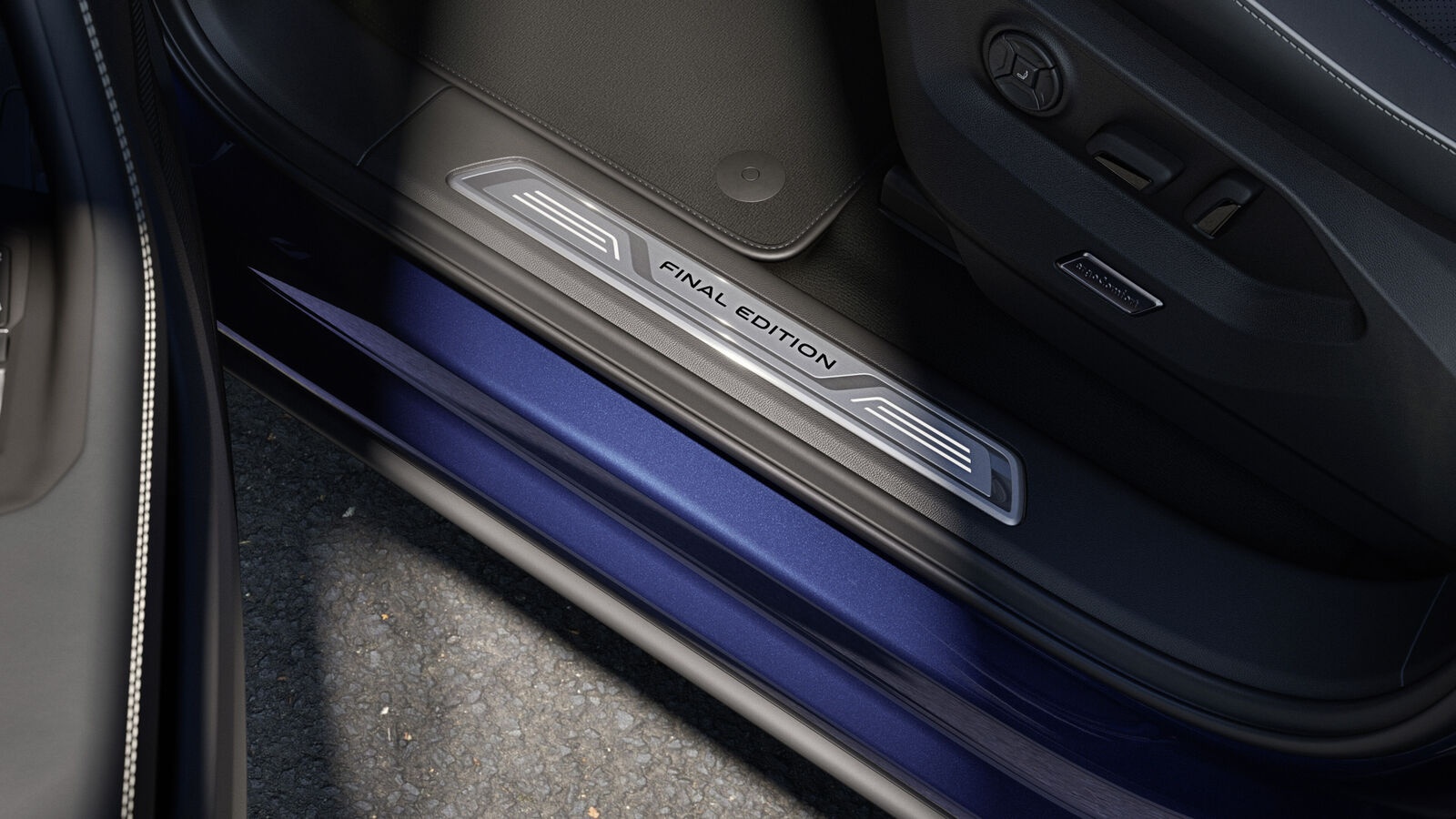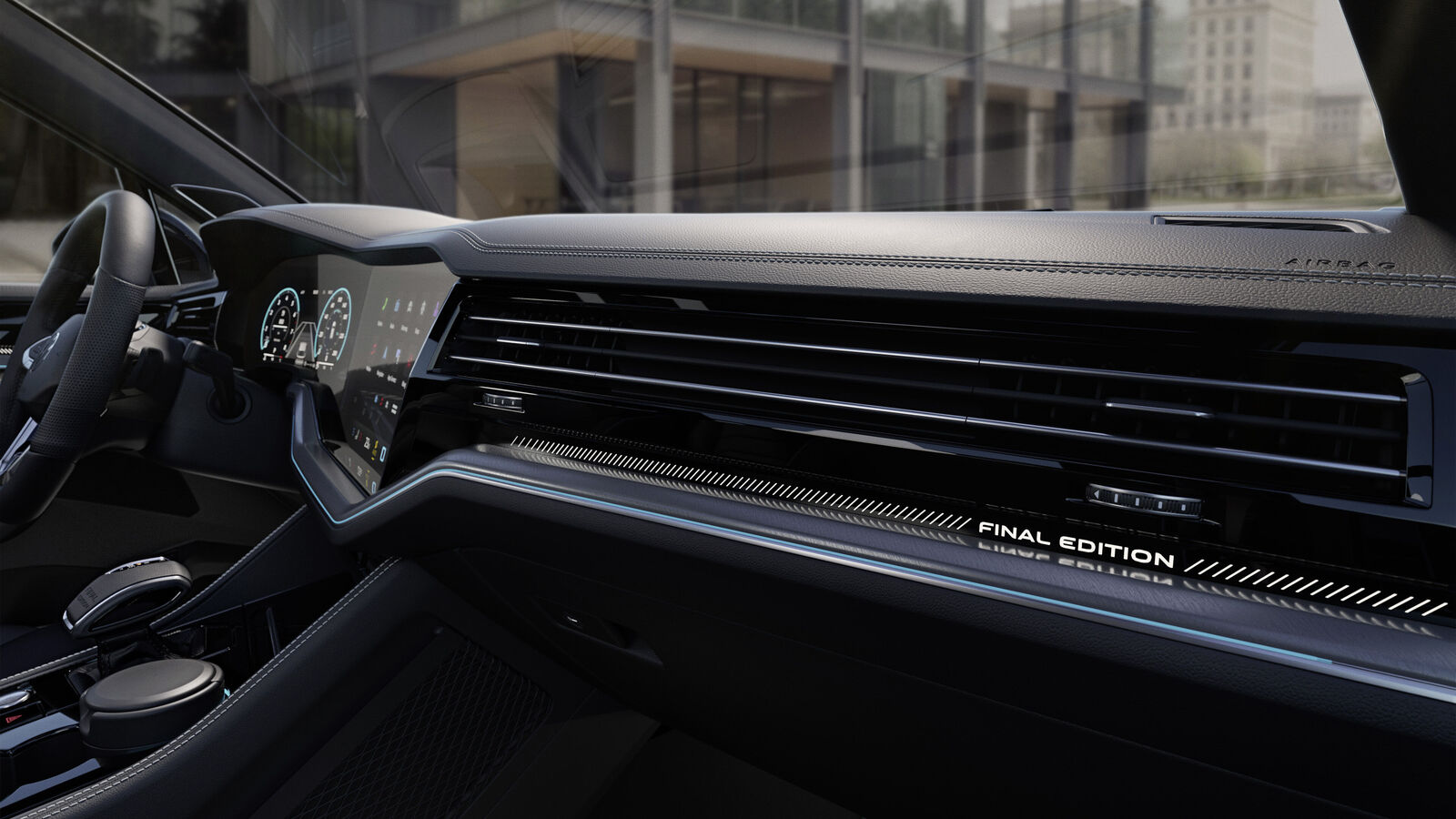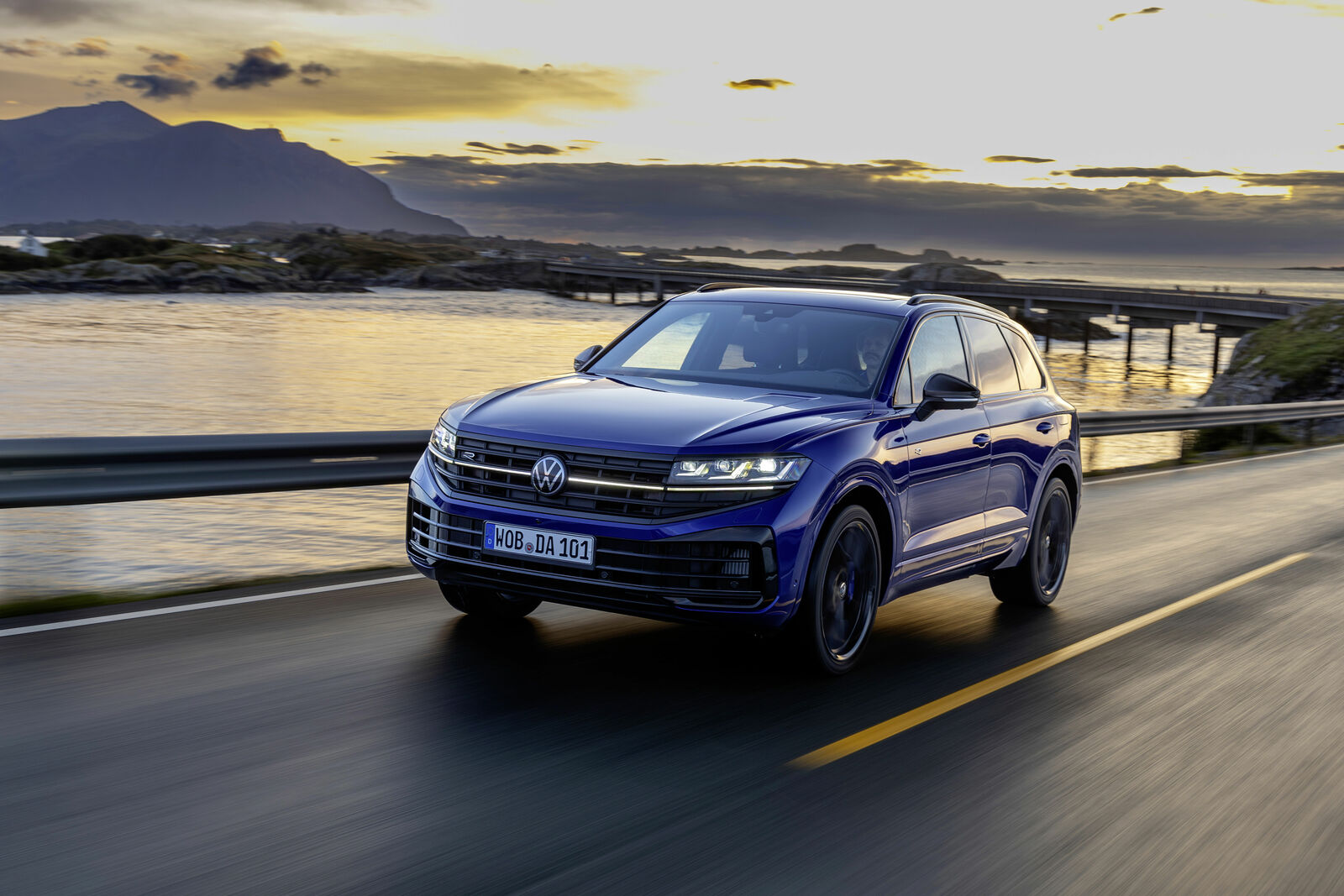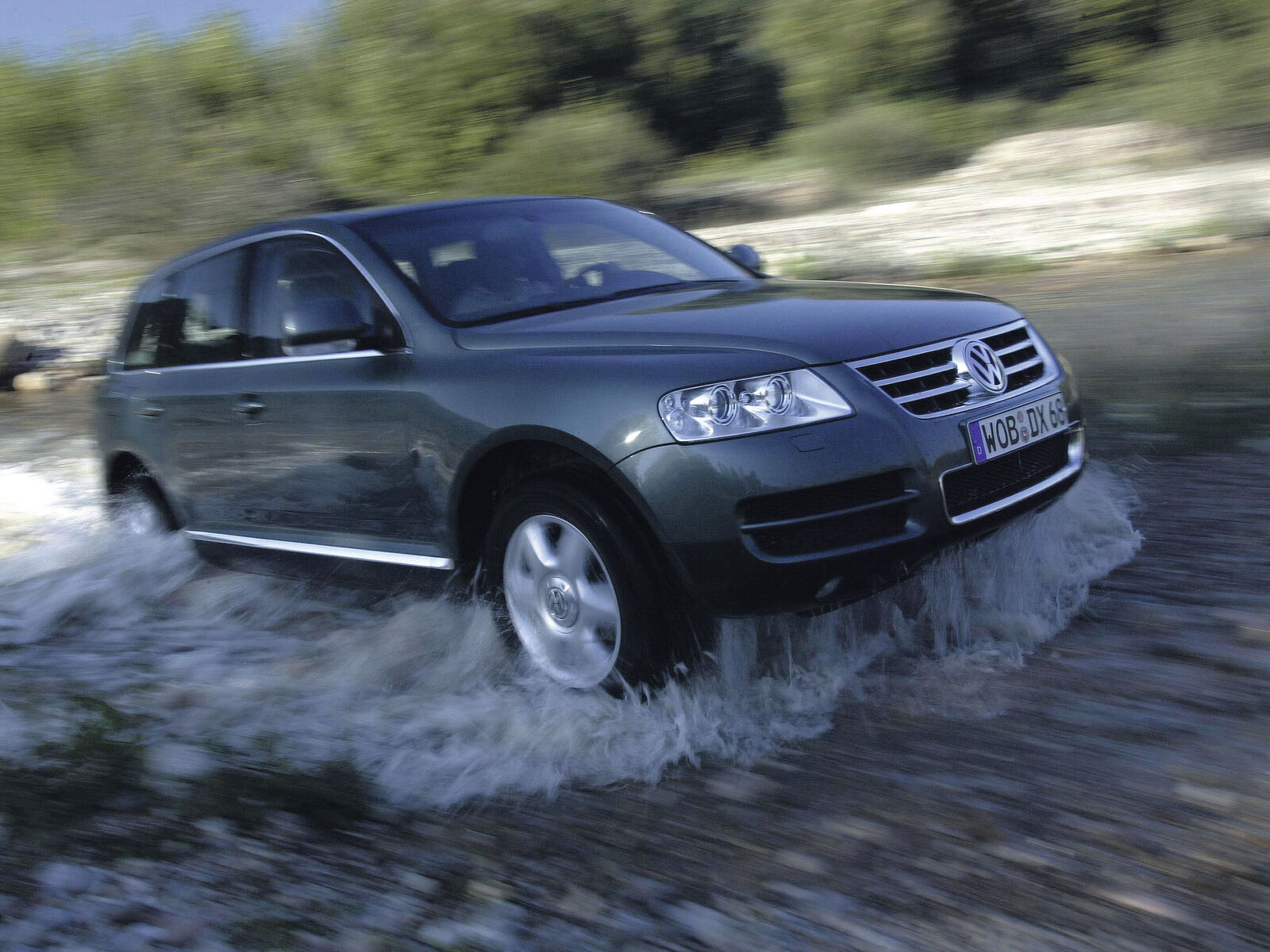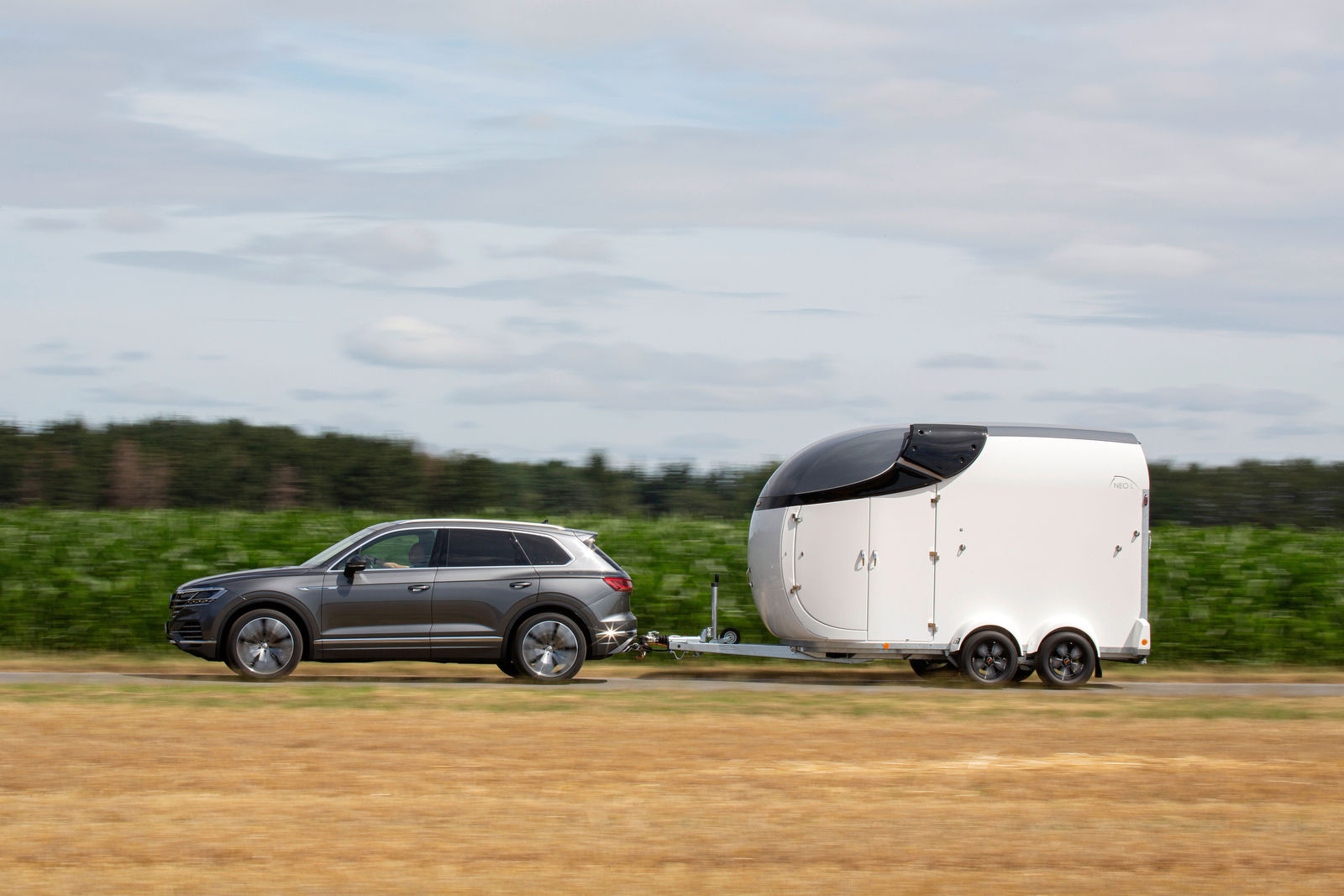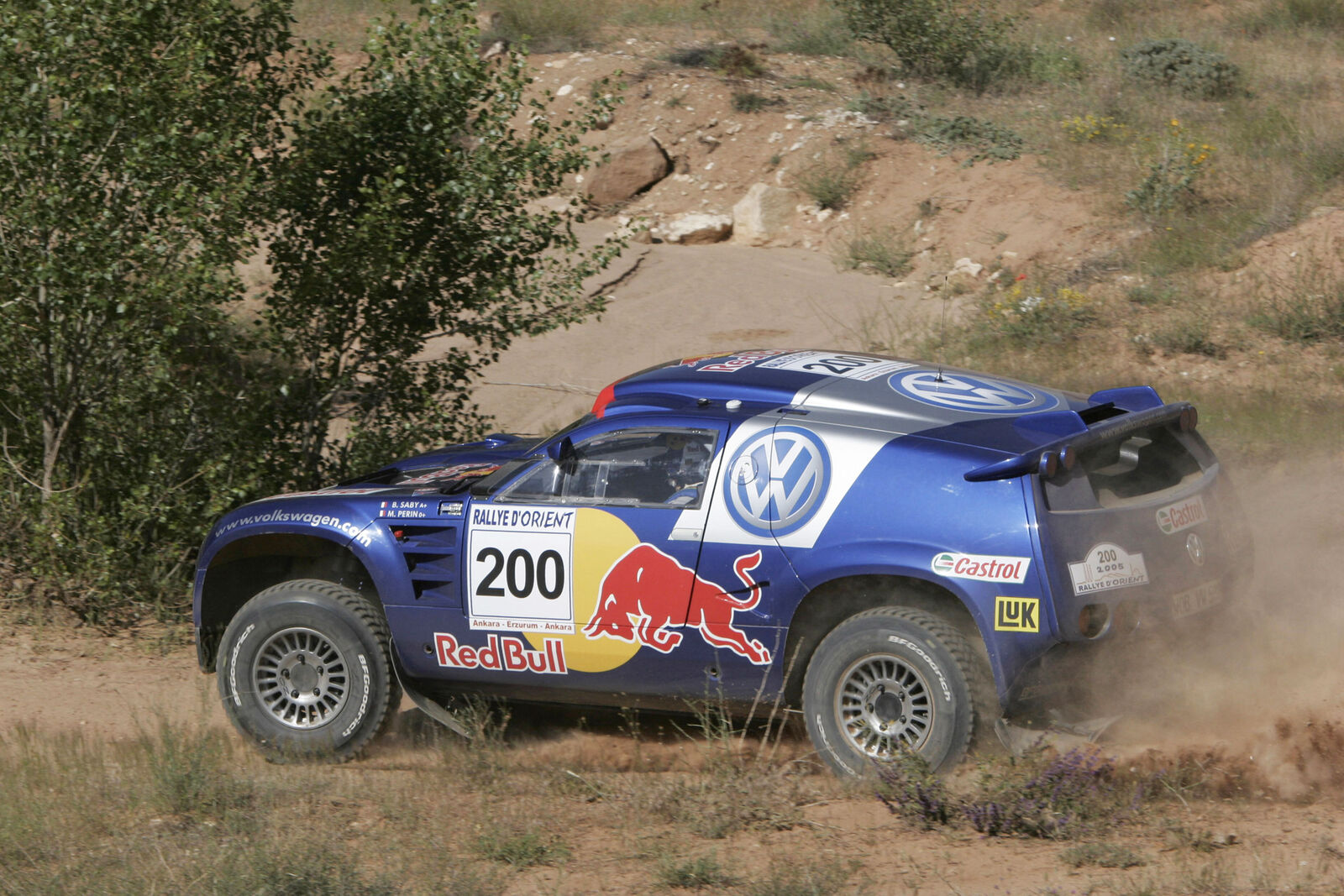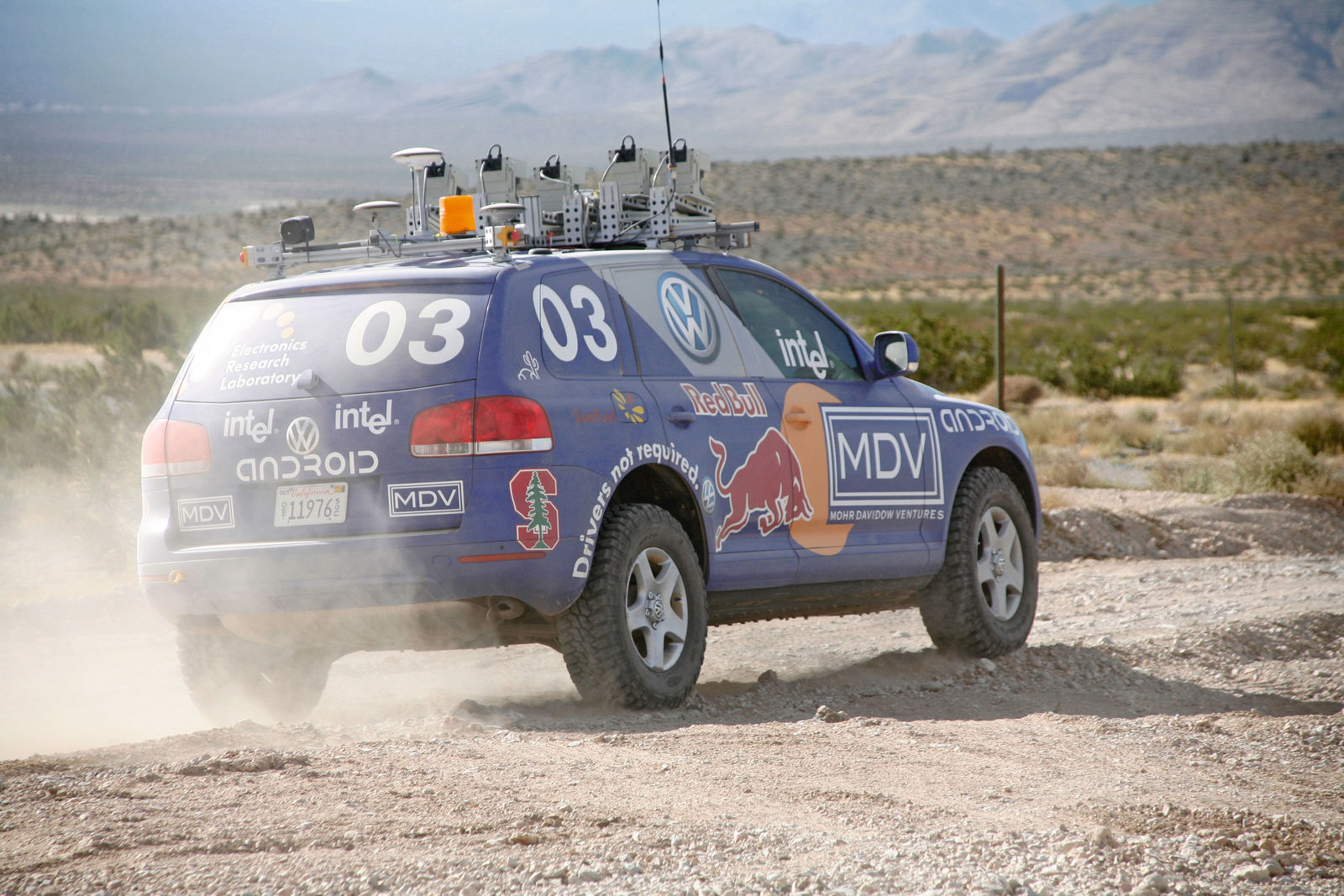- Successful premium SUV starts last year of production with a special edition
- Model is available to order until the end of March 2026 and will then be delivered to customers as a FINAL EDITION in every equipment line
- Volkswagen launched the Touareg on the market in 2002 and has continued to demonstrate its premium competence ever since
- More than 1.2 million units sold in three generations
Production of the Touareg combustion engine model ends in 2026. To mark this occasion, Volkswagen is launching the “Touareg FINAL EDITION”. The special-edition model can be ordered until the end of March 2026 at prices starting from 75,025 euros. The luxury-class SUV has fascinated since 2002 with its confident character, excellent comfort and high-tech features. Volkswagen entered the premium segment for the first time 23 years ago with the Touareg and the Phaeton saloon.
The new special-edition model is characterised by exclusive design elements both inside and out. All equipment lines feature striking “FINAL EDITION” lettering laser-engraved on the window surrounds of the rear doors and also embossed in the leather of the gear lever. The multicolour ambient lighting comes as standard in the Elegance equipment line and above; the label also appears in the illuminated dash panel trim and on the illuminated sill panel mouldings.
Technology pioneer with a global success story spanning more than 20 years. With its first off-road vehicle, Volkswagen entered a new vehicle segment in 2002 and at the same time raised the brand to a higher level. With its dimensions, equipment and technologies, the Touareg quickly established itself in the luxury class. Despite its size, it has always exuded a timelessly understated design. Its interior has been stylish in every generation, with high quality standards and comfort as well as many new technical features. These innovations have also made it the flagship in Volkswagen’s portfolio up to the present day. Many features from the Touareg were also later available in the small car segment – luxury class technology became accessible to everyone.
While Europe, and Germany in particular, represent a significant sales market, the Touareg is now available in 39 countries. More than 1.2 million units have been sold to date – an impressive figure in the SUV C-segment.
A look back at three generations.
Touareg I / 2002. Thanks to its numerous innovations, such as the electromechanical roll stabilisation or CDC air suspension with six level settings, the Touareg became one of the most highly regarded SUVs in its class immediately after its market launch in autumn 2002. With this equipment, it was possible to drive through water up to a depth of 58 centimetres or negotiate slopes with inclines of up to 45 degrees. The top-of-the-range model of the Touareg line was the Touareg V10 TDI, which was equipped with the most powerful diesel engine installed at Volkswagen at the time. The 230 kW (313 PS) 5-litre ten-cylinder engine generated a maximum torque of 750 newton metres and accelerated the 2.5-tonne Touareg to 100 km/h in 7.8 seconds. The top speed was 225 km/h. Thanks to this top model, the Volkswagen brand has today become one of the world’s leading full-range providers, successfully covering all important segments from small cars to high-end SUVs. The Touareg I was built from 2002 to 2009 and was one of the most successful luxury SUVs of its time with more than 471,000 units sold.
Touareg II / 2010. The second generation of the Touareg grew both in width and length, thus underlining its luxurious comfort. The vehicle front end emphasised sporty elegance with new, aerodynamic bumpers and a newly designed radiator grille. The first hybrid vehicle from Volkswagen was introduced on the market to coincide with the launch of the second generation. The Volkswagen Touareg 3.0 V6 TSI Hybrid was powered by a combination of a supercharged V6 petrol engine with 245 kW (333 PS) and a 34.3 kW (46 PS) electric motor. The electric motor of the full hybrid vehicle recuperated energy during braking and fed this into the battery. The combined system output of the hybrid was 279 kW (380 PS) with a maximum torque of 580 Nm. With this, the Touareg II accelerated to 100 km/h in 6.5 seconds and achieved a top speed of 240 km/h. The average consumption was 8.2 litres of premium-grade petrol per 100 kilometres. A host of new assist systems made journeys even safer and more comfortable, also in difficult terrain. Volkswagen sold more than 483,000 units of the Touareg II during its production period from 2010 to 2018.
Touareg III / 2018. The third generation of the Touareg has an even more dynamic character thanks to modern lines, generous body panelling and a new steel and aluminium body made from weight-saving materials. The attractive, vital look is reinforced by the increase in the wheelbase to 2.904 metres and a reduction in the vehicle height by seven millimetres. The completely revamped cockpit features digital innovations as well as connectivity and assist systems and guarantees comfortable and safe driving. This is also ensured by the optimised electromechanical active stabilisation system, whose assist system continuously detects roll movements up to 400 times per second to ensure optimum adjustment and a safe driving experience in every terrain. Since autumn 2020, the Touareg R Hybrid has been the flagship model in the range: a plug-in hybrid SUV with system power of 340 kW (462 PS), maximum torque of 700 Nm and a maximum speed of 250 km/h. More than 265,000 units of the Touareg III have already been sold worldwide since its debut in 2018. To this day, it offers the highest level of ride comfort and the best possible practical usability – for example, as a towing vehicle with a maximum trailer weight of up to 3.5 tonnes.
A look back at the Touareg’s records.
Volkswagen Race Touareg – the serial winner. The Touareg has also set standards in off-road racing. With the Race Touareg, which was specially developed and raced by Volkswagen Motorsport, Volkswagen became one of the dominant teams in the Dakar Rally. Among other things, this is shown by three overall victories in a row: 2009 with Giniel de Villiers, 2010 with Carlos Sainz and 2011 with Nasser Al-Attiyah. The greatest advantages of these motorsport prototypes were their robust design, all-wheel drive and exceptional reliability.
Touareg Stanley – winner of the Grand Challenge for autonomous vehicles. One of the first intelligent vehicles in automotive history, the Touareg Stanley, won the prestigious DARPA (Defence Advanced Research Projects Agency) Grand Challenge in California, USA in 2005. A total of 23 vehicles took part in the race for autonomous vehicles through the Nevada desert – only four reached the finish line. The Touareg Stanley completed the 212-kilometre route in six hours, 53 minutes and 58 seconds without human intervention – and was the first to reach the finish line. Stanley was a joint project between Volkswagen and other research centres. Equipped with laser detectors, stereo vision equipment, cameras, GPS and specially developed control software, Stanley navigated precisely through rough terrain. The victory marked a milestone in the development of self-driving vehicles and was the beginning of partly automated assist systems. The third generation of the Touareg production model saw the introduction of Adaptive Cruise Control ACC with predictive cruise control, which – enhanced and now named Travel Assist – is one of the best assist systems for partly automated driving available today.
The Touareg that towed a Boeing. In 2006, Volkswagen created a global stir and a world record: a near-production Volkswagen Touareg V10 TDI towed a Boeing 747 weighing around 155 tonnes on an airport runway. With its powerful torque of 750 Nm and modified running gear, the Touareg moved the jumbo jet over 150 metres – and then brought it safely to a standstill. For this extraordinary experiment, the Touareg was loaded with over four tonnes of additional weight in order to optimally transfer the power to the ground. Despite the enormous load, a standard engine, gearbox and air suspension were used – impressive proof of the vehicle’s performance and robustness.
The Touareg as a long-distance specialist. In 2011, the Volkswagen Touareg V6 TDI once again spectacularly proved its endurance and reliability: in just 11 days, 17 hours and 22 minutes, long-distance expert Rainer Zietlow and his team completed the legendary Panamericana – from Tierra del Fuego in Argentina all the way to Alaska. The 22,750-kilometre route traversed 17 countries and almost all the climate zones on earth – from tropical heat and sandstorms to snow and ice. With this trip, the Touareg beat the previous world record by four days and again impressively demonstrated its robustness, efficiency and comfort.
Media

